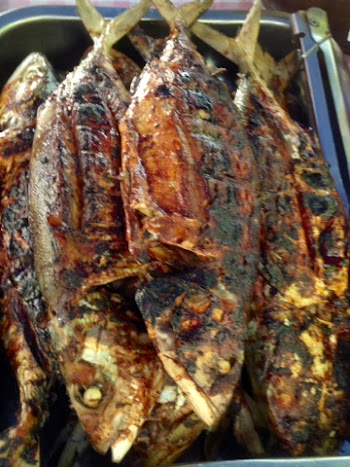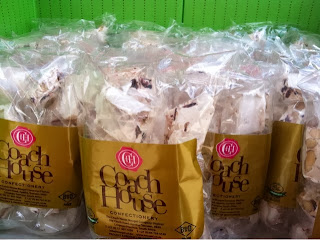In Xoliswa's job interview with Mandela she was asked one question: “I believe that you are a great cook, but can you cook our food?". She replied that she can cook ukutya kwasekhaya - Xhosa for 'home food'. And according to her that was it - she got the job.
Last year Xoliswa published her cookbook named Ukutya Kwasekhaya, a compilation of Mr Mandela's favourite recipes, which were mostly traditional Xhosa dishes. According to her book he had a bit of a sweet tooth and loved Malva pudding and Strawberry trifle.
What an honour it must of been to cook for this great man!
 |
| Nelson Mandela and Xoliswa Ndonyiya - Photo by Debbie Yazbek |
To honour this legend and to say thank you for what he did for South Africa and bringing us together as a Rainbow nation, I made his favourite strawberry trifle, as described in Xoliswa's book.
 |
| Whisking the instant pudding, sour cream, milk and orange zest to a thick consistency |
 |
| Putting it all together |
We then packed a cooler bag with one of the glass cups I filled with trifle and went off to the Nelson Mandela square to pay our respects and toast Madiba with his favourite strawberry trifle.
 |
| The final product - Madiba's favourite strawberry trifle |
I was moved by the massive amount of flowers, cards and candles that were filling up the Square. The calm atmosphere and graciousness of the large crowd of people that filled the Square almost to capacity was beautiful and I could feel the Madiba legacy in all of us.
 |
| Old and young paying tribute to the great man |
 |
| That's me, paying tribute to Nelson Mandela |
Here is the recipe for the trifle. I downloaded it from an article about Xoliswa's cookbook at nydailynews.com (21 October 2012). I made a few minor adjustments to the recipe and preparation as it appeared in the New York Daily News, indicated in brackets below.
Strawberry trifle
Serves 6-8Ingredients
1 packet strawberry jelly (I used raspberry jelly)
1 packet vanilla instant pudding
1 cup sour cream (250ml)
1 teaspoon orange zest
200ml milk (not in the original recipes)
1 vanilla Swiss roll, sliced
2 cups heavy cream, whipped (500ml)
1 pound strawberries, leaves removed (2 punnets)
Instructions
Prepare the gelatin (jelly) according to the packet instructions.
Combine the instant pudding, sour cream, milk and orange zest.
Beat until the mixture thickens (use a handwhisk as it is too thick to beat with an electric mixer).
Set aside in the fridge to set.
Once the gelatin (jelly) and pudding are both almost set, start to assemble the trifle:
In a large bowl or individual bowls, put alternate layers of Swiss roll, pudding mixture and gelatin, ending with a layer of the pudding mixture on top. (I added cut-up strawberries to the layers - it adds a nice flavour and texture surprise)
Cover and refrigerate for at least 2 hours.
Top with whipped cream, arrange the strawberries on top and serve.
 |
| Toast on Nelson Mandela. Long live his legacy! |
May we always remember to forgive, accept differences and strive for peace.
Long live Mandela's legacy!
The cookbook is available at amazon or kalahari

























.JPG)


.JPG)



.JPG)
.JPG)
